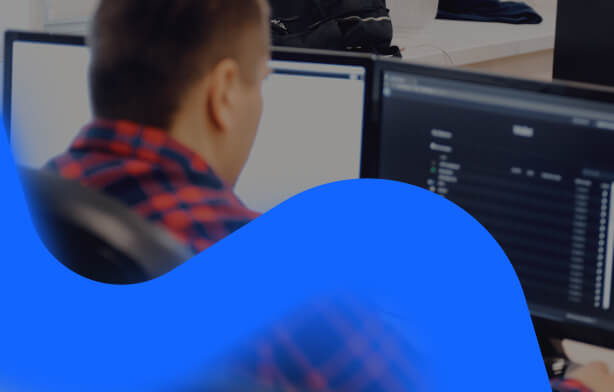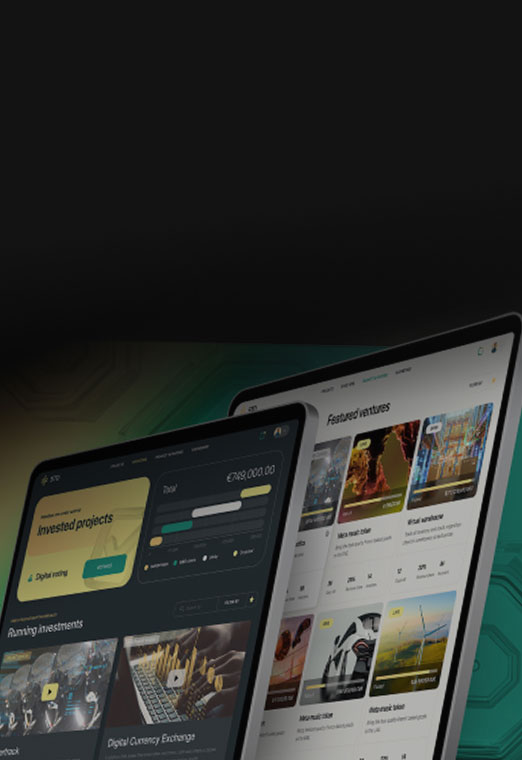Despite all the automation, owning assets today is still slow and manual. Buy shares in a fund and someone has to update a registry. Invest in property and you wait on a notary with a pile of signatures. Even bond trades can stretch over days of settlement and multiple middlemen.
Real-world assets tokenization solves all that. It’s the new way of owning assets that promises fewer delays, fewer intermediaries, and a much cleaner experience for everyone involved.
Disclaimer: The Content is for informational purposes only. You should not construe any such information or other material as legal, tax, investment, financial or other advice. Nothing contained on our Site constitutes а solicitation, recommendation, endorsement, or offer by Aetsoft or any third party service provider to buy or sell any securities, tokens or other financial instruments.
There are risks associated with investing in securities and tokens. Loss of principal is possible. You alone assume the sole responsibility of evaluating the merits and risks associated with the use of this information before making any decisions based on such information or other content. ln exchange for using the site, you agree not to hold Aetsoft liable for any possible claim for damages arising from any decision you make based on information or other Content made available to you through the site.
What is RWA tokenization?
With real-world assets tokenization, assets are recorded on a blockchain as digital tokens. It could be government bonds, real estate, private credit pools, or even commodities.
Tokenization doesn’t change the asset itself. Instead, blockchain serves as a shared record of ownership and transactions. But the legal rights remain grounded in existing law, so the token issuers have to follow the same legal procedure. Except with RWA tokenization these processes are automatic and happen within a few minutes.
A legal wrapper issues tokens that correspond to rights in the underlying asset. Investors go through KYC/AML once and are added to a whitelist. Transfers of those tokens are allowed only if the buyer also meets the eligibility rules. Cash moves either through stablecoins or standard rails, but the settlement record sits on the chain.
A quick mental model
Think of a fund as the legal “box”. Inside sits the asset: a building, a loan pool, or gold bars. The box issues digital units (tokens) that map 1:1 to legal rights. A transfer agent and a custody setup keep the real‑world linkage tight.
Primary issuance sells tokens to qualified investors. Secondary trading happens on regulated venues or via controlled P2P transfers. Stablecoins or bank rails settle the cash side. Compliance gates sit at every door.
You know what? That picture barely mentions blockchain. And that’s the point. The chain is just the shared database everyone agrees not to argue with.
Why tokenize real world assets?
Liquidity and fractional ownership
If you want to invest in a Dubai apartment without RWA tokenization, prepare to wire hundreds of thousands, find a notary, and wait. With tokens, you can buy a compliant slice of the same exposure and settle quickly. Liquidity stops being a rare event and becomes a tool you can actually use.
Lower ticket sizes also widen the pool of investors. A family office can test an idea without committing a full fund. A corporate can seed a project now and broaden distribution once performance data arrives. Because onboarding is wallet‑based and reusable, raising capital quietly gets cheaper.
Transactions faster than ever
Email threads, PDFs, and wire cut‑offs slow everything. Tokenized issues move toward a clean handover: eligibility checked, cash confirmed, position updated. The clock shifts from days to hours. Treasury teams notice because cash no longer camps in limbo.
Routine steps can be coded. Redemptions at a cut‑off, rent routed on the first business day, transfers paused when covenants slip. Code takes care of the predictable tasks while people handle the judgment calls.
Enforced legal rules
Rules that used to hide in binders now sit in the logic of the token. Who may hold, when resale is allowed, and which jurisdictions are excluded are enforced directly. Auditors follow evidence rather than chasing email trails.
Investors open a portal and see positions, cash flows, and any important flags. Managers publish NAV updates or covenant metrics on schedule. Those events become part of the record, which raises trust without extra paperwork.
Automated operations
When exposures share a standard form, they can slide more easily into repo, margining, or secured lending. A tokenized T‑bill ladder can serve as operational collateral. Senior slices of private credit can be posted with counterparties that accept them.
On the operating side, KYC isn’t repeated for every raise. Distribution lists don’t sit in spreadsheets. Corporate actions run on a timer. Teams spend less time fixing inconsistencies and more time underwriting the next deal. The savings accumulate quietly over time.
Types of real world assets ready for tokenization
Finance tokenization
This is where the biggest real world assets tokenization shift happens right now. With the law getting ready, it’s now possible to issue security tokens that bear the same legal rights as regular securities.
Short‑term funds and treasuries are simple instruments with predictable flows, which makes them natural candidates. Investors benefit from quicker processing while operations teams spend less time reconciling positions.
In a practical arrangement, a fund issues tokens that stand in for shares or notes, and a transfer agent maintains a whitelist of eligible wallets. Subscriptions and redemptions are recorded digitally, and distributions reach investors automatically. Trading can take place on regulated venues or through transfers that still enforce eligibility rules.
The payoff is visible in faster settlement and wider distribution channels, with audit trails that are easier to follow. Challenges remain because NAV is still calculated outside the chain, custody of keys demands careful control, and the registrar role must be clearly assigned. The natural progression from here is tokenized collateral, allowing funds and treasuries to serve as margin or repo instruments in pilots. Treasury management improves without a complete rebuild of existing OMS or EMS systems.
Real estate tokenization
Tokenization in real estate has its own character. Equity stakes in SPVs, rent‑linked notes and staged development finance are gaining ground, mainly because they promise steady cash flows and well‑defined rights while allowing smaller tickets without distorting ownership structures.
One structure might use equity tokens in a property SPV, where transfer windows or rights of first refusal are coded into the rules. Another approach is income‑share notes that send rent on a fixed schedule. Development tranches can be organied so that funding only releases once milestones are verified. Distribution most often happens through private placements to qualified investors, with some room for secondary trading under strict controls. Retail access is not impossible, but it requires a careful license stack and early legal planning.
For sponsors, real-world assets tokenization opens the door to a wider pool of investors and reduces the size of each contribution. Investors, on their side, gain better visibility into their holdings and no longer have to chase updates. The risks do not disappear: valuations take time to update, tax rules differ across countries, and physical assets can never settle instantly. Closings continue, though they tend to involve fewer hurdles than before.
Private credit tokenization
Private credit and trade finance are built on risk slicing and constant reporting. RWA tokenization gives that process a cleaner surface. Instead of juggling versioned spreadsheets, the structure lives in one registry that shows who holds which exposure and what the latest servicing data says.
A pool vehicle can issue claims that reflect seniority without forcing everyone to learn new tooling. Servicers push performance data on a timetable that investors can rely on. The cash waterfall runs from the same rules every period, and when a threshold is missed the system can pause transfers until covenants recover.
What changes on the business side is tempo. Warehouses turn faster, reporting calls get shorter, and mezzanine placements stop dragging. What doesn’t change is the need for reliable inputs. If the servicer feeds patchy data, the ledger will simply preserve the gaps. Privacy around borrower information still applies, and cross‑border assignment rules continue to govern how receivables move.
Commodities tokenization
Commodities already run on receipts, so real world assets tokenization tightens the discipline rather than rewriting it. The warehouse or custodian keeps the metal or grain and reports positions; the token points to that inventory and carries the conditions for who may hold it and how delivery is requested.
The advantage shows up when trades settle and audits happen. Fewer disputes, clearer trails, simpler financing against inventory—these become routine rather than exceptional. Two cautions remain front and center. Chain‑of‑custody must be trustworthy, and the last mile of redemption often needs a person to confirm that the right goods moved to the right party.
IP, royalties & carbon tokenization
Markets with many small payments struggle with timing and trust. Real world assets tokenization helps by turning the payout logic into code and the statement into a shared record. Rights holders issue claims linked to defined cash flows. Usage or verification data arrives from the usual sources—stream counts, meter readings, certification events—and the contract applies the split without manual reconciliation.
Participants notice the change in rhythm. Artists see money arrive when it should, buyers understand exactly what they own, and administrators spend less time chasing mismatched reports. Law and verification still set the boundaries. Territory rules for IP continue to apply, disputes sometimes need human resolution, and carbon projects must stand up to checks that sit outside the chain.
How to start tokenizing?
Begin with the asset and the legal wrapper. Everything starts with the asset. Decide which real world assets you want to tokenize: a property, a pool of loans, a fund share class, or a commodity position. Once that’s clear, select the legal vehicle that can hold it—an SPV, a trust, or a regulated fund. The wrapper defines the rights and obligations, and the token is just the representation.
Map compliance requirements early. Before anyone writes code, bring in counsel. Who can invest? From which jurisdictions? What transfer restrictions apply? These rules must be documented and later built into the token logic. Missing this step leads to expensive rewrites.
Choose infrastructure that matches your needs. Not every chain or platform will fit. Some projects prefer permissioned networks with known participants, others go for public chains with strong permissioning at the token layer. Evaluate custody solutions, KYC providers, and potential venues for secondary trading. The stack should align with both your compliance model and your investor base.
Build the investor journey. Think through onboarding. Investors need to pass KYC/AML once, connect a wallet, and subscribe. They’ll also want a portal that shows positions, cash flows, and documents. Smooth onboarding sets the tone for the whole raise.
Plan distribution and liquidity options. Decide how investors will exit. Will there be scheduled transfer windows? An ATS or MTF listing? Controlled peer‑to‑peer transfers? Liquidity design is not an afterthought—it shapes the value proposition for investors.
Test with a small cohort. Run a pilot with a small investor group that understands both the benefits and the limitations. Use it to check legal mechanics, data flows, and settlement rails. The feedback loop from this first group will guide the scale‑up.
Prepare ongoing operations. Once tokens are live, someone must own the registry, update corporate actions, and handle investor communications. Break‑glass controls—pause, clawback, or forced transfer under a court order—should be documented and tested. Tokenization is not “set and forget”; it is a new operating model.
The practical takeaway. RWA tokenization projects succeed when legal clarity comes before technology. The blockchain is just a ledger. Without setting proper rules, tokens do not represent any asset rights.
That’s why at Aetsoft we combine legal partners with ready‑made technical infrastructure. We help you choose the right wrapper, build compliant token logic, and launch in weeks instead of months. If you’re considering RWA tokenization, talk to us before you start coding.





